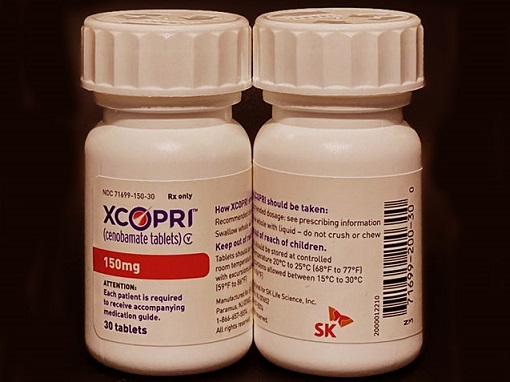Nikhil Prasad Fact checked by:Thailand Medical News Team Dec 08, 2024 4 months, 5 days, 1 hour, 10 minutes ago
Medical News: A New Era in Epilepsy Treatment
Epilepsy, a neurological condition that affects millions globally, often leaves patients grappling with seizures despite medication. Researchers from Lipinski University in Poland and the Medical University of Lublin have brought forth promising findings on cenobamate, a newly approved antiseizure medication.
 Polish Researchers Find That Cenobamate Brings Hope to Epilepsy Patients
Polish Researchers Find That Cenobamate Brings Hope to Epilepsy Patients
Approved by the US Food and Drug Administration (FDA) in 2019 and the European Medicines Agency (EMA) in 2020, cenobamate has sparked interest for its potential to change the landscape of epilepsy treatment.
This
Medical News report delves into the unique features and study results surrounding cenobamate, which offers new hope to those living with focal seizures.
How Cenobamate Works
Unlike traditional antiseizure medications, cenobamate operates through a dual mechanism. It inhibits persistent sodium currents in the brain and enhances gamma-aminobutyric acid (GABA) activity, which calms overactive neurons. By stabilizing the brain’s electrical activity, cenobamate reduces the likelihood of seizures. Researchers have highlighted its capacity to elevate the seizure threshold, potentially reshaping how drug-resistant epilepsy is managed.
Studies conducted in animal models revealed cenobamate’s effectiveness against multiple types of seizures. Its dual action - reducing excitatory signals and boosting inhibitory ones - sets it apart from many other antiseizure drugs.
Key Findings from Clinical Trials
Cenobamate’s efficacy has been tested in various clinical settings, with results showcasing its potential as an adjunctive therapy. A pivotal study led by researchers at multiple institutions involved patients aged 18 - 70 years with focal seizures unresponsive to one to three antiseizure medications. Participants received cenobamate in doses ranging from 100 mg to 400 mg daily, while a control group received a placebo.
Results indicated significant reductions in seizure frequency across all cenobamate dose groups. Patients receiving the highest dose (400 mg) reported a 55% reduction in seizure frequency, with 64% of them being responders. Additionally, up to 21% of patients achieved complete seizure freedom, a rare outcome in drug-resistant epilepsy.
Long-Term Efficacy and Safety
Long-term studies have reinforced cenobamate’s potential. Over 7.8 years, patients continued to experience reduced seizure frequency while reporting manageable side effects. Common adverse effects included dizziness, drowsiness, and headache, but these were generally mild. Researchers emphasized the importance of a slow titration process to minimize side effects and improve patient tolerance.
Real-World Implications
Cenobamate's real-world applications have been explored in studies involving diverse
patient groups. For example, in Spain, 170 patients with focal seizures showed promising results with cenobamate as an add-on therapy. Nearly 13% of participants became seizure-free after consistent use, while 63% experienced at least a 50% reduction in seizure frequency.
Researchers noted that cenobamate also allowed for reductions in other medications, improving overall treatment regimens. Many patients were able to discontinue or lower the dosage of existing drugs, reducing side effects and improving quality of life.
Expanding Potential Uses
Emerging evidence suggests cenobamate might benefit patients beyond focal epilepsy. A small study explored its effects on generalized epilepsy and mixed seizure types, such as those seen in Lennox-Gastaut and Dravet syndromes. Participants experienced a 58% average reduction in seizures, with no reported worsening of symptoms. These findings highlight the drug's versatility and open doors for future research.
Conclusion
Cenobamate has proven to be a game-changer in epilepsy treatment. Its ability to reduce seizure frequency, improve seizure-free rates, and minimize reliance on multiple drugs offers renewed hope for patients with drug-resistant epilepsy. While its primary approval is for focal seizures, its promising results in generalized and mixed seizures could pave the way for broader applications.
As with any new treatment, long-term studies and careful monitoring are crucial. Researchers encourage healthcare professionals to adopt slow titration protocols and integrate cenobamate thoughtfully into existing treatment plans. Despite its novelty, cenobamate is already making waves as one of the most effective options available today.
The study findings were published in the peer-reviewed International Journal of Molecular Sciences.
https://www.mdpi.com/1422-0067/25/23/13014
For the latest on Epilepsy, keep on logging to Thailand
Medical News.
Read Also:
https://www.thailandmedical.news/news/u-s-fda-approves-neffy-the-first-nasal-epinephrine-spray-for-treating-severe-allergic-reactions
https://www.thailandmedical.news/news/new-hope-for-glioblastoma-treatment-orladeyo-shows-promise-in-reducing-cerebral-edema
https://www.thailandmedical.news/articles/med-news
